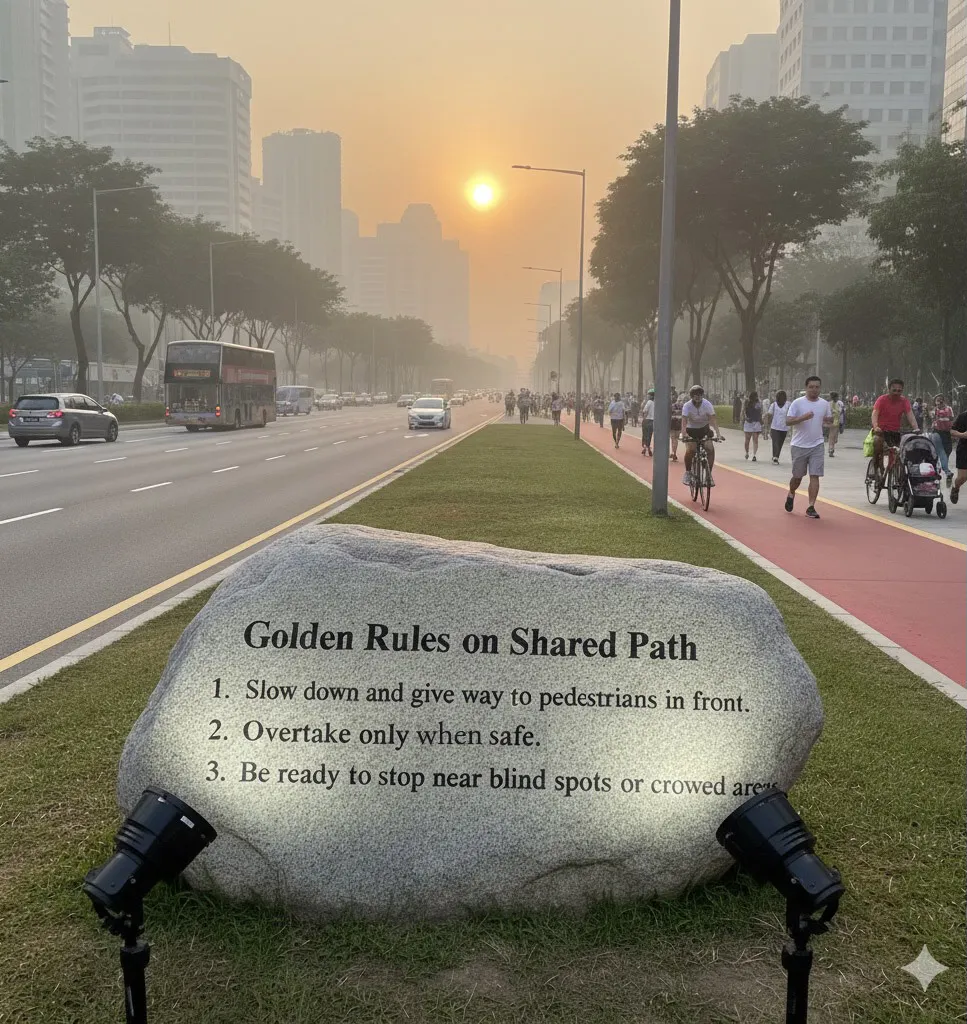- Rules and norms should prioritise the safety of more vulnerable users.
- Rules should be kept simple and clear for the general public to remember.

The following guidines are intended to serve a broad range of users — including pedestrians (walkers and joggers), riders of personal mobility devices (PMDs) of various speeds, cyclists, and others — who share common spaces such as park connectors and pavements.
The codes is arranged in three levels:
- Top Level: Essential Rules for Safety — must be observed at all times for the protection of others.
* Strict liability: when accident happens between cyclists and pedestrians, the burden of proving innocent is on the cyclists. - Second Level: Norms for Harmony — recommended practices to promote courteous and safe coexistence.
- Third Level: Optional Tips — e.g. good practices for convenience or users’ own protection.
Top-Level (Rules for Safety)
These must be strictly followed and may, where necessary, can be enforced. legally
- Riders of bicycle and PMD have to slow down and give way to pedestrians on all paths.
- Always be prepare to stop safely, particularly when approaching areas of potential conflict (such as bus stop) or blind spots (such as bends, corners obstructing the line of sight).
- Overtake only when it is safe. Allow at least 1 meter gap from the pedestrians.
Second-Level (Norms for Harmony)
These should be observed as far as practicable to ensure safety and harmony of public paths.
- Keep left.
- Overtake on the right only when it is safe to do so.
- Use the designated paths where possible (e.g., footpath for walking, cycling path for cycling)
Optional (Good Tips)
These are optional recommendations for personal safety.
- Ensure your bicycle is in good working condition, particularly the brakes and tyres.
- Switch on lights bright enough for others to see you clearly.
- Use protective gear such as gloves, elbow and knee guards, and a helmet.
- Reserve ringing the bell only for warning before approaching a blind spot, or when the bicycle brake is suddenly out of control.
- If alerting pedestrian is needed, ring once or twice at least 3-5 seconds in advance. Then wait for the pedestrians to acknowledge. If no response, assume they cannot hear and slow down to their walking speed. Follow behind until it is safe to overtake.
- Avoid startling others by passing too closely.
What do you think of this Code Of Conduct? Please share your views in the comment.
- This proposal closely follow a draft Proposed for the First Rule /COC for the shared-path back in 2016.
- Current Rules and Code of Conduct for Active Mobility (LTA)
- FB discussion link:
https://www.facebook.com/share/p/16LvTPmWEW/
